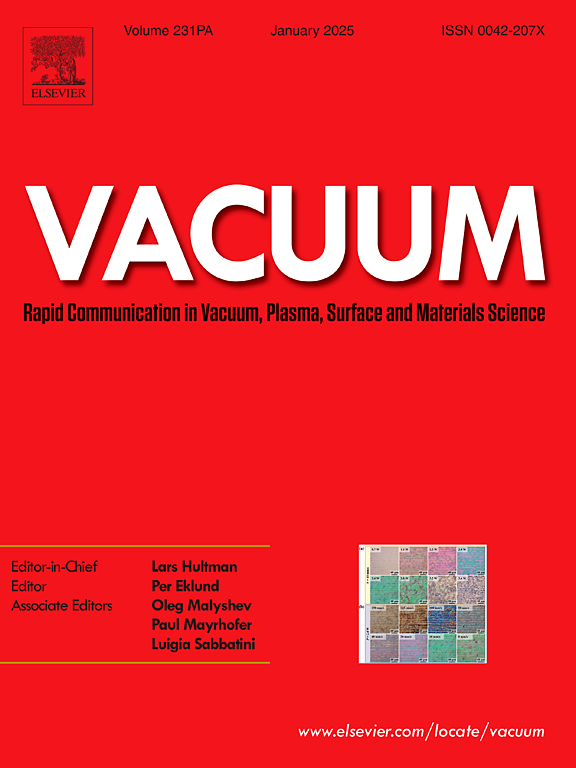Self-forming LaF3-Ti-MoS2/Ti-DLC nanomultilayer films for excellent atmospheric-vacuum alternating tribological performance
IF 3.8
2区 材料科学
Q2 MATERIALS SCIENCE, MULTIDISCIPLINARY
引用次数: 0
Abstract
Spacecraft components need to fulfill requirements for low friction and long service life in alternating atmospheric-vacuum environments. In this study, based on the lubricating characters of LaF3-Ti-MoS2 in vacuum and Ti-DLC in the atmospheric environment, LaF3-Ti-MoS2/Ti-DLC(MTLC) multilayer films are designed and self-formed by controlling the residence time of the sample at the target position in magnetron sputtering process. The effect of rotational speed on the microstructure, mechanical properties, and tribological performance of the MTLC films are systematically investigated. The multilayer structure exhibits excellent mechanical properties at the rotational speed of 0.5 rpm, which allows the MTLC films to achieve a lifespan exceeding 2 × 105 laps in alternating atmospheric-vacuum environments. Transmission electron microscope(TEM) results suggest the environmentally adaptive mechanism is that the LaF3-Ti-MoS2 layer acts effective in vacuum and the Ti-DLC layer acts effective in atmosphere. This dynamic interplay between the layers contributes to the prolonged lifespan of the films in these alternating environments, highlighting their potential for various space applications.
求助全文
约1分钟内获得全文
求助全文
来源期刊

Vacuum
工程技术-材料科学:综合
CiteScore
6.80
自引率
17.50%
发文量
0
审稿时长
34 days
期刊介绍:
Vacuum is an international rapid publications journal with a focus on short communication. All papers are peer-reviewed, with the review process for short communication geared towards very fast turnaround times. The journal also published full research papers, thematic issues and selected papers from leading conferences.
A report in Vacuum should represent a major advance in an area that involves a controlled environment at pressures of one atmosphere or below.
The scope of the journal includes:
1. Vacuum; original developments in vacuum pumping and instrumentation, vacuum measurement, vacuum gas dynamics, gas-surface interactions, surface treatment for UHV applications and low outgassing, vacuum melting, sintering, and vacuum metrology. Technology and solutions for large-scale facilities (e.g., particle accelerators and fusion devices). New instrumentation ( e.g., detectors and electron microscopes).
2. Plasma science; advances in PVD, CVD, plasma-assisted CVD, ion sources, deposition processes and analysis.
3. Surface science; surface engineering, surface chemistry, surface analysis, crystal growth, ion-surface interactions and etching, nanometer-scale processing, surface modification.
4. Materials science; novel functional or structural materials. Metals, ceramics, and polymers. Experiments, simulations, and modelling for understanding structure-property relationships. Thin films and coatings. Nanostructures and ion implantation.
 求助内容:
求助内容: 应助结果提醒方式:
应助结果提醒方式:


